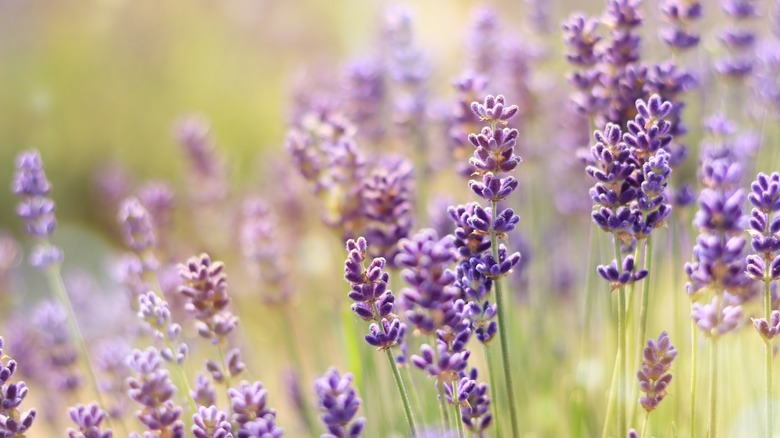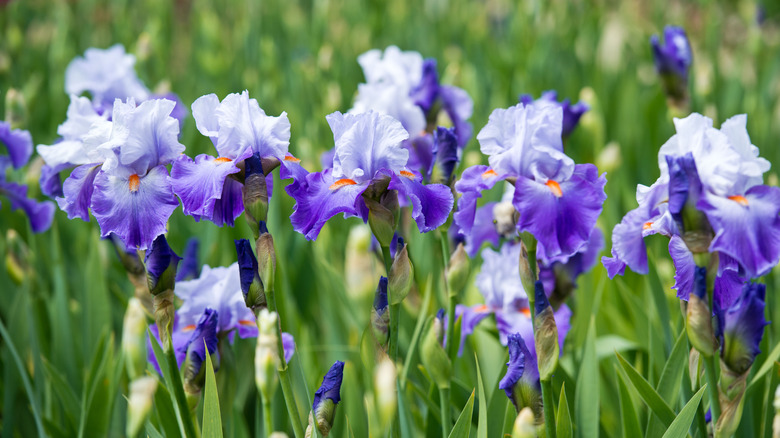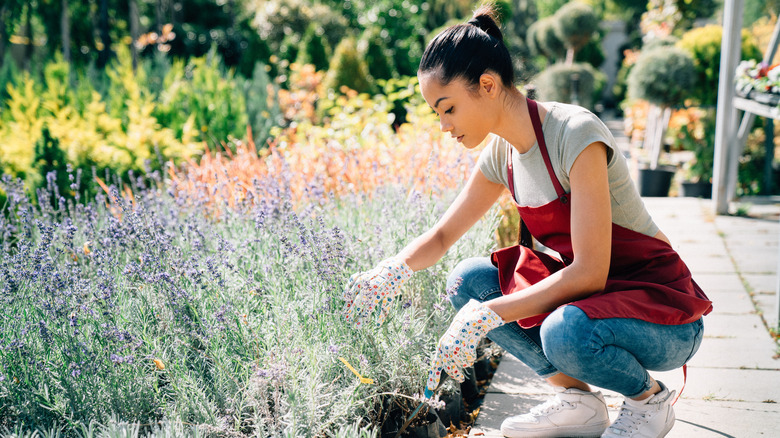Lavender Is The Ideal Companion For This Popular Spring Bulb
Companion plants are the best friends of a garden. Certain species, when planted together, benefit neighboring plants. Benefits include improved soil health, pest control, weed suppression, a dynamic landscape, and increased pollinator activity. For example, planting lavender in your edible garden shades neighboring plants and its scent deters many insects. Lavender is an ideal companion for spring flowers like bearded iris. In fact, when planted together, these two perennials will bring the best out of each other.
Successful companion gardening depends on a few factors. Plants that have the same or similar growing conditions are the easiest to pair together. Trying to grow a sun-loving plant and a shade-loving plant in the same spot is an exercise in frustration. One will thrive while the other struggles. But, growing two full-sun-loving flowers in the same well-draining and neutral soil is the key to a perfect garden. Lavender and irises have many of the same requirements, therefore planting them near each other is easy, mutually beneficial, fragrant, and absolutely stunning.
Plant bearded iris with your lavender this spring
Bearded iris is a member of the showy iris family that comes in a variety of cultivars and striking colors. Purple cultivars blend well with the soft shades of lavender while species of bold yellow petals create a complementary balance of colors. The two plants are also quite different in texture and shape. Irises have soft and delicate petals and lavender grows in a vertical, cone-like shape. So, a garden bed with the two plants mingled together will appear dimensional and attractive.
The fragrant oil linalool in lavender will also deter multiple species of insects. Insects like flies are driven away by the fragrant scent that we humans enjoy. That means the iris whitefly, the notorious enemy of irises everywhere, will think twice before dining on the flowers. However, lavender is a favorite flower among pollinators. Because they never visit just one flower, any nearby irises will also be visited by bees, butterflies, and birds. Bringing more pollinators to a garden doesn't only help the flowers, it promotes a happy, healthy ecosystem.
Other companion plants for irises
Like lavender, bearded irises need full sun to partial shade, and well-draining loamy or sandy soil. The best companion plants for irises share their sun and soil requirements. Though bearded irises are not native to the United States, there are iris species that are, and when they're planted with other native plants, their mutually beneficial relationship does wonders for local wildlife. Species like asters can be found throughout the US and each region has a native variety. They share the iris' resistance to drought and crave full sun. They also thrive in variable soil pH as long as the soil is well-drained. Asters benefit neighboring flowers by deterring pests like aphids and mites and attracting bees.
Companion plants do not need to be limited to two or three varieties. A garden could have several species all thriving in harmony. Allowing multiple plants to mingle gives a garden the best of each plant's resiliencies. Other iris-approved companions are lupines and alliums, which both have a unique texture and shape. Daylilies, poppies, and peonies have a softer appearance but come in many bold colors. Growing companion plants is a great way to have a vivid floral display, but most importantly, it's better for your garden's health.


